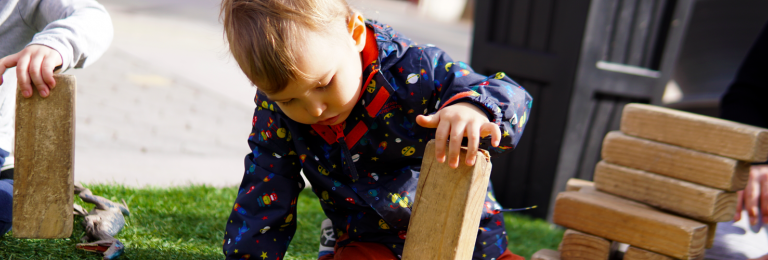More on loose parts
Children need opportunities to be creative and inventive in their environment, manipulating and constructing their ideas through play. Children often prefer playing with boxes, sticks, rocks, water, sand, and ropes that can be manipulated in whatever way they choose over traditional toys that have limited flexibility and play value. All these items, along with countless other items that can have multiple roles in play, are defined by the term ‘loose parts’.
Loose parts are materials with no specific set of directions and that can be used alone or combined with other materials.The loose parts theory suggests that when children are given a wide range of materials that have no defined purpose, they will be more inventive in their play and have infinite play opportunities by manipulating them in ever-changing ways that their imaginations create.
In addition to this, evidence concerning loose parts play indicates that this type of play promotes:
● Problem solving and theoretical reasoning
● The ability to think creatively
● Excitement and adventure through play
● Social skills and teamwork, including communication and negotiation skills
● Physical activity
For adults, facilitating and supporting loose parts play requires a sensitive role that recognizes children’s play process and resists the urge to step in too soon or too frequently. Adults can also support loose parts play by engaging the children in activities in different environments and settings. For example, when children are involved with play in a natural setting they use what is available, such as water, dirt, sand, sticks, leaves, pinecones, rocks and feathers to create whatever they imagine. On the playground, loose parts can include balls, hoops, jump ropes, buckets and other containers. Indoors loose parts can be blocks, dress up play props, blankets, and art materials.
Loose parts are about real world learning for all children and young people. The process of introducing them and of playing with them involves collaboration, sharing thinking, problem-solving and decision-making. The impact of embedding loose parts play is a positive cycle of improved health and wellbeing.
Sources
- Loose Parts Policy, Canadian Public Health Association
- Loose Parts Play, Play and Playground Encyclopedia
- Loose Parts Play, a toolkit by Theresa Casey and Juliet Robertson
